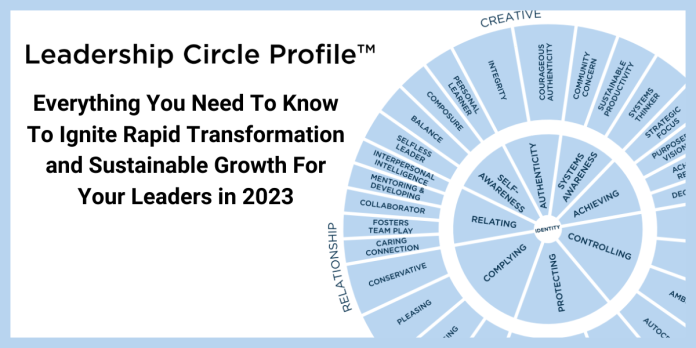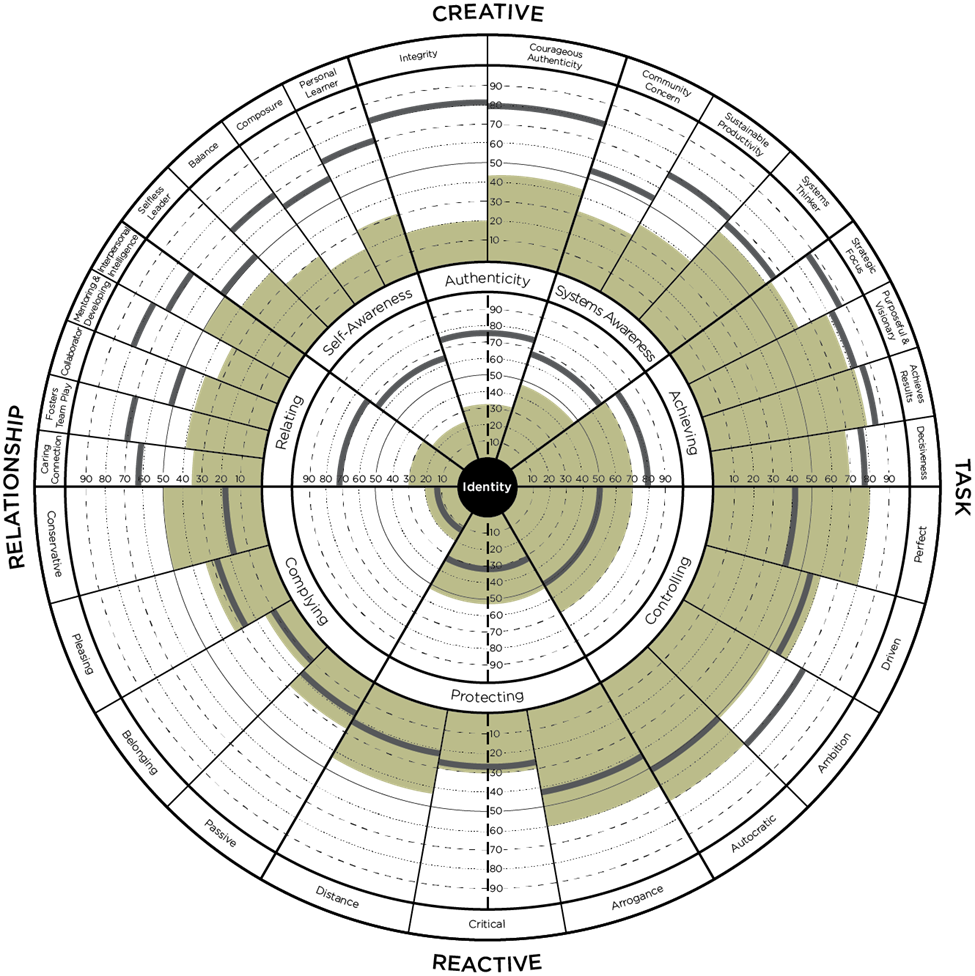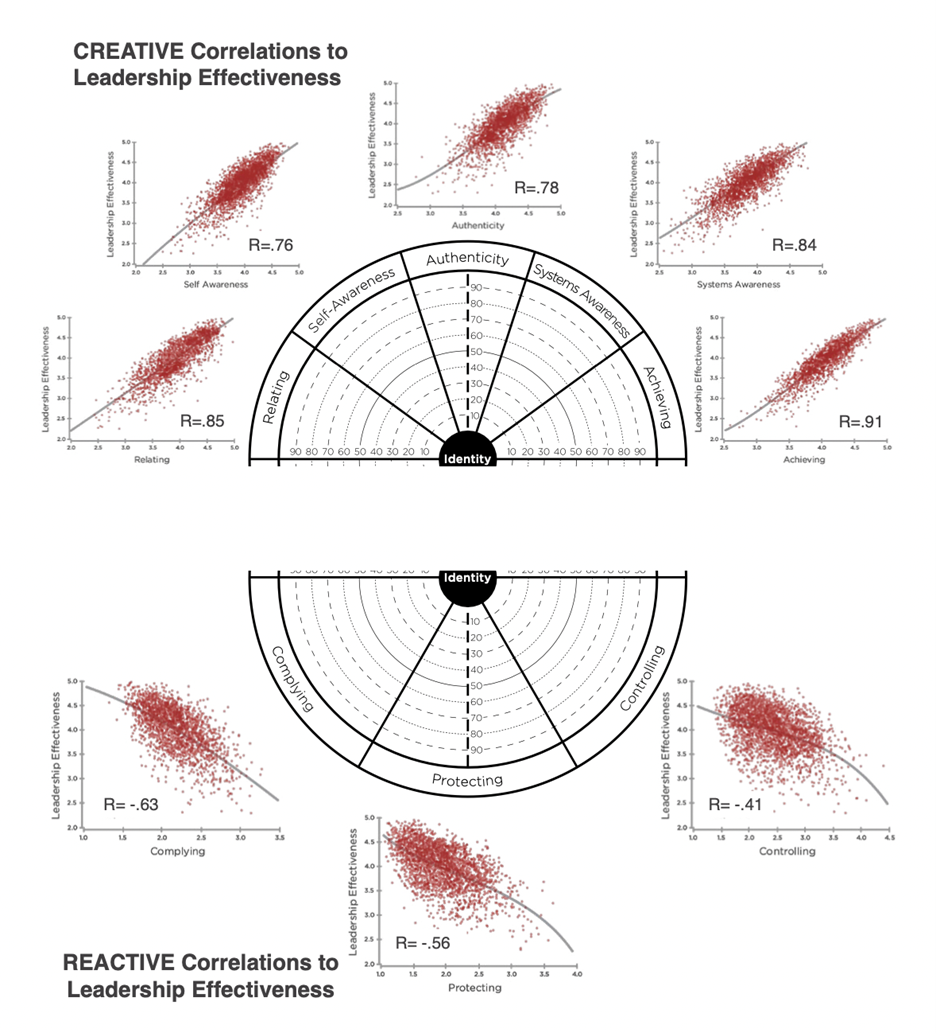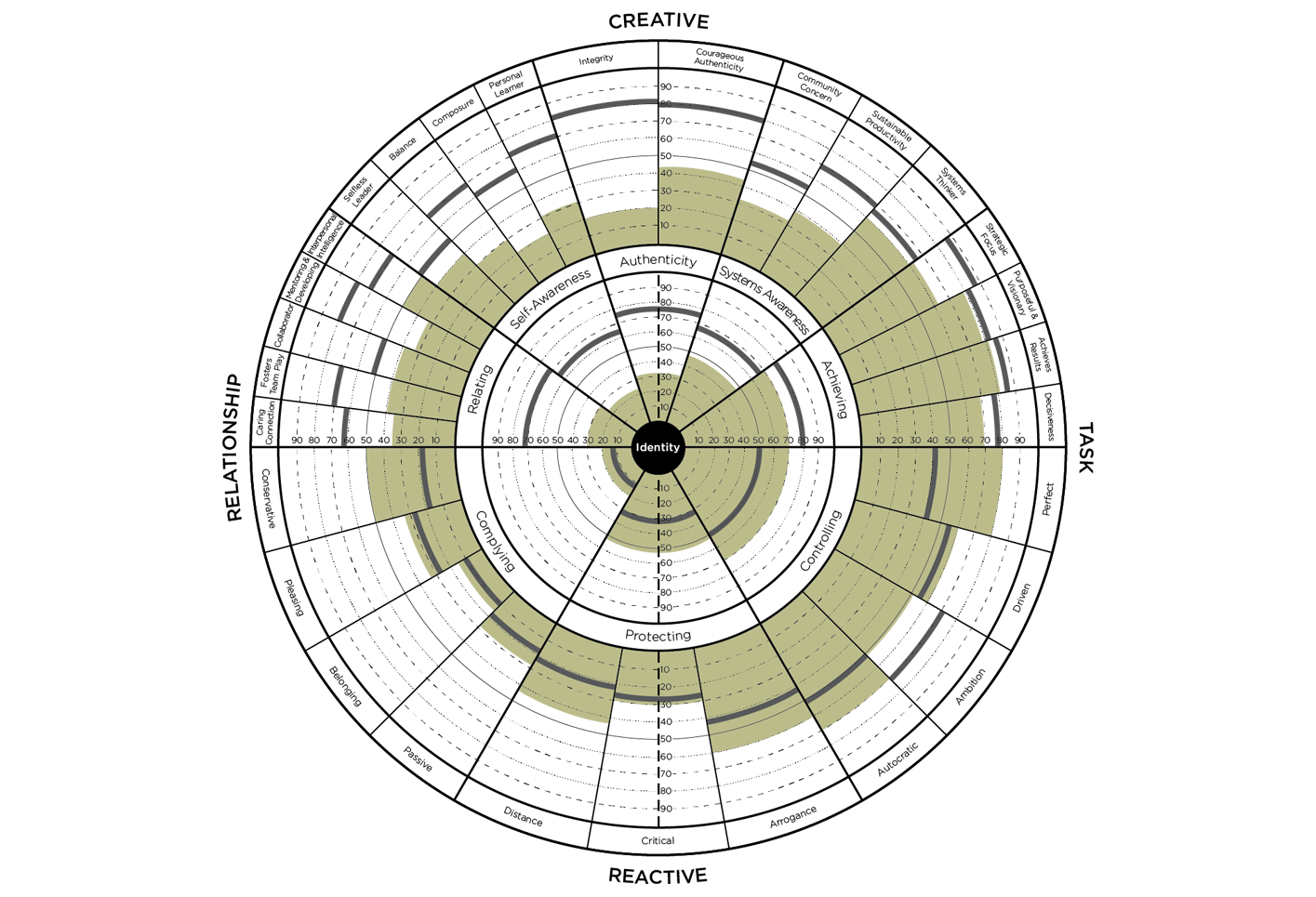
Leadership Circle Profile (LCP 360): Everything You Need To Know To Ignite Rapid Transformation and Sustainable Growth For Your Leaders in 2023
The Leadership Circle Profile (LCP) 360 assessment is now the most sought-after leadership assessment for leadership development programs.
This rapid gain in traction is mainly for its unique ability to trigger transformation and ignite sustainable growth.

Book a strategy call to work with LEADx to deliver the LCP 360.
Here are five reasons why the LCP stands out over other 360 assessments:
Reason #1: It doesn’t target “symptoms.” It targets the root cause. Most 360 assessments target specific behaviors. But, changing these behaviors isn’t always sustainable. Often, an evaluation targets a behavior without ever getting to its root cause. You can practice “delivering better feedback,” but will you change permanently if something more significant holds you back? Your values, beliefs, and past experiences all weigh into how you lead. The Circle Profile helps leaders weave together root causes and behaviors. It helps leaders ask: “How are my behaviors and mindset enabling or constraining my intended leadership impact and our business performance?” By getting to the root cause and thought process behind your actions, the LCP 360 triggers sustainable change.
Reason #2: It’s research- and data-backed. Over 4 million people have taken the assessment. Your scores get benchmarked against these 4 million data points using a percentile rank. That way, you can quickly grasp where you fall compared to other leaders. For example, in the image above, the leader falls in the 70th percentile for “Achieving.” Meaning only 30% of leaders score higher. The assessment is reliable, valid, and powerful. See the impressive stats below as evidence:
 Reason #3: It doesn’t use negativity to spark fear (like the Hogan Dark Side assessment). Instead, the assessment seeks to understand the root cause of your behaviors and habits of thought that hold your leader back. Because of this, leaders tend to be more receptive to the LCP. Receptivity can help lead to more rapid understanding, acceptance, and change.
Reason #3: It doesn’t use negativity to spark fear (like the Hogan Dark Side assessment). Instead, the assessment seeks to understand the root cause of your behaviors and habits of thought that hold your leader back. Because of this, leaders tend to be more receptive to the LCP. Receptivity can help lead to more rapid understanding, acceptance, and change.
Reason #4: It delivers all this complex data in a simple, elegant way. Many assessments with simple-to-digest, good-looking models lack the in-depth research and significant data necessary to justify their approach (think DISC). And on the flip side, many assessments backed by in-depth research and data lack approachability (think 360s with book-length reports). The LCP delivers both sound quality research and approachability. Despite being heavily researched and data-backed, leaders can quickly digest and understand their scores and insights by looking at the circle image.
Reason #5: It’s the only 360 that covers Creative Competencies and Reactive Tendencies. By combining the two into one 360, the LCP sets leaders up to build their understanding of their strengths and areas for improvement.
What is the Universal Model of Leadership?
Leadership Circle co-founder and chief knowledge officer Bob Anderson created the Universal Model of Leadership to integrate disparate research and theories into a unified leadership framework. It measures how well a leader manages two key areas: tasks and relationships. The model draws on research demonstrating a direct link between these variables and the leader’s overall effectiveness.
The progressive Stages of Adult Development are the core of the Universal Model of Leadership. In his book Mastering Leadership, Anderson explains that leaders in most organizations struggle to move past the “reactive” stage in favor of the “creative” stage of development. Reactive leaders are less effective than creative ones. As such, the model itself is a circle divided into four quadrants: “people creative” and “task creative” in the upper hemisphere, “people reactive” and “task reactive” in the lower.
Anderson’s theory holds that leaders can move up through five stages of leadership, becoming more mature and effective with each new stage. These five stages are:
- Egocentric – An egocentric leader is deeply attuned to their own needs—to the detriment of those around them. Egocentric leaders are immature and self-centered. Most leaders move out of this immature stage without assistance.
- Reactive – Anderson writes that “reactive leaders are authored by others.” They rely heavily on scripts of what leaders are supposed to do and say, which often leads to micromanaging and an overemphasis on top-down hierarchy. Leadership Circle’s research reveals that over 80% of leaders are stuck in the “reactive” stage.
- Creative – Creative leaders’ behaviors flow from their values and purpose rather than a set of assumptions about how leaders are supposed to behave. They empower others, lead with vision, and take ownership to improve organizational systems.
- Integral – Integral leaders are “big picture” thinkers. They are, as Anderson writes, “built for complexity.” Integral leaders have an astonishing ability to thrive in the tension between opposing ideas, which allows innovative solutions to emerge.
- Unitive – Unitive leaders have a deep awareness and respect for the interconnectedness of all things. Their leadership is not simply in service to their organization but to a vision of a better world. Anderson states that this is the rarest and most challenging stage, with very few achieving this level of “enlightened” leadership.
Each stage of leader development reflects an ascending level of consciousness. Anderson and Leadership Circle co-founder Bill Adams explain that “consciousness is the Internal Operating System of performance. With each evolution in consciousness comes greater capacity, capability, and mastery to meet complexity with greater effectiveness. Higher consciousness begets higher performance.”
So now that you can see how the LCP differentiates itself from all the other 360s, here’s a more detailed dive into what the LCP looks like.
LEADx experts can help you deliver the LCP 360.
What is the Leadership Circle Profile?
The Leadership Circle Profile is a more complete version of the Universal Model, providing more detail about the behaviors and mindsets that make up each quadrant.
The outer circle displays the 29 dimensions the LCP measures, bringing unconnected leadership research and frameworks into one model. The inner circle includes eight “summary dimensions,” or themes.
Leaders display the competencies across the top half of the circle in the “creative” stage of development. These 18 competencies fit into five “summary dimensions:”
Relating: measures the leader's ability to engage with others in a way that brings out the best in people. Relating dimensions include:
Caring Connection: measures the leader's capacity to build caring relationships.
Fosters Team Play: measures the leader's ability to foster teamwork within their team, organization, and within groups in which they’re a member.
Collaborator: measures the extent to which the leader engages others in a way that invites people to find common ground with each other.
Mentoring & Developing: measures the leader's ability to mentor and develop others in growth-enhancing relationships.
Interpersonal Intelligence: measures the leader’s ability to engage in productive conflict and engage with others’ emotions while managing their own.
Self-awareness: measures the leader's commitment to their growth and development and the degree to which they express inner self-awareness through authentic, high-integrity leadership. Self-awareness dimensions include:
Selfless Leader: measures the extent to which the leader pursues serving others over self-interest and is motivated by benefiting a common good rather than their status.
Balance: measures the leader's ability to balance their work and personal life, as well as manage stressors without losing themself.
Composure: measures the leader's ability to be calm and focused, even in conflict and difficult situations.
Personal Learner: measures the degree to which the leader pursues learning and personal growth.
Authenticity: measures the leader's ability to relate to others authentically. Authenticity dimensions include:
Integrity: measures how well the leader adheres to their values and the degree to which they “walk their talk.”
Courageous Authenticity: measures the leader's willingness to take a stand for unpopular opinions, bring up sensitive subjects the group would rather avoid, and openly deal with conflict in relationships.
Systems Awareness: the degree to which the leader focuses on improving whole systems, thereby improving productivity and benefiting the community. Systems awareness dimensions include:
Community Concern: measures a leader’s service orientation and the extent to which they connect their legacy to serving the community and making the world a better place.
Sustainable Productivity: measures the leader's ability to drive results that maintain or improve the organization’s long-term effectiveness.
Systems Thinker: measures the degree to which the leader thinks and acts in light of the long-term health of the entire system.
Achieving: the extent to which the leader can be described as visionary, authentic, and high-achieving. Achieving dimensions include:
Strategic Focus: measures the extent to which the leader strategically thinks and plans to ensure long- and short-term organizational thriving.
Purposeful & Visionary: measures the extent to which the leader communicates and lives out a commitment to their purpose and vision.
Achieves Results: measures the extent to which the leader is goal-oriented and maintains a reputation for achieving goals and performing at a high level.
Decisiveness: measures the leader's ability to make decisions promptly and the extent to which they are comfortable making decisions in light of uncertainty.
The behaviors across the bottom half of the circle are reactive leadership tendencies. These summaries and dimensions include the following:
Complying: the extent to which a leader achieves their sense of self-worth and security by complying with others’ expectations rather than following their own needs and wants. Complying dimensions include:
Conservative: measures the extent to which the leader follows convention, adheres to processes and procedures, and lives within the organization’s prescribed rules.
Pleasing: measures the degree to which leaders seek the approval of others to feel secure as a person.
Belonging: measures the leader's need to conform, adhere to rules, and meet the expectations of authority figures.
Passive: measures a leader’s orientation toward action and the extent to which they believe they are powerless over their circumstances.
Protecting: The belief that the leader can achieve self-preservation and self-worth by maintaining a sense of withdrawal and distance. Protecting dimensions include:
Arrogance: measures the leader’s inclination toward behavior that implies a big ego like superiority, pompousness, and self-absorption.
Critical: measures the leader’s tendency toward cynicism and criticism.
Distance: measures the leader’s tendency to achieve self-worth through emotional distance and withdrawal.
Controlling: measures the extent to which the leader is driven by accomplishment and achievement. Controlling dimensions include:
Perfect: measures the leader’s need to attain perfection in results and performance.
Driven: measures the extent to which the leader believes their worth and security are determined by hard work and resulting accomplishments.
Ambition: measures the extent to which the leader needs to get ahead, “climb the ladder” in the organization, and prove they’re better than others.
Autocratic: measures the leader’s inclination toward aggressiveness, control, and invulnerability.
As a 360-degree assessment, each leader who completes the evaluation will receive two scores for each dimension: a self-score and a score based on the feedback of others.
These scores are shown within the circle as percentiles compared to a growing base of more than 20,000 self-assessments and 3.5M feedback assessments. Scores above the 67th percentile are considered high. Low scores fall below the 33rd percentile.
Team up with LEADx to deliver nudges personalized to your leaders' results reports.
How the Leadership Circle Profile Assessment Works
There are two parts to completing the Leadership Circle Profile: a self-survey and an evaluator survey.
The self-survey consists of two sections. One in which the leader answers 124 questions about their leadership, and another in which the leader identifies the most effective leader they have ever worked with and answers seven additional questions with that person in mind. The profile itself takes 15 to 20 minutes to complete.
Questions for both sections are in Likert scale format. The leader will read a statement about an attitude, mindset, or behavior and rank how often they engage in it on a scale of one to five, with five being “always” and one being “never.” Sample questions include:
- I am quick to seize opportunities upon noticing them.
- I articulate a vision that creates alignment within the organization.
- I balance community welfare with short-term profitability.
- I provide feedback focused on professional growth.
- I work too hard for others’ acceptance.
The evaluator survey includes the same two sections as the self-survey and an additional section to gather open-ended feedback. Evaluators complete one of two selections of three open-ended questions:
Short Questions
- What should this leader stop doing?
- What should this leader start doing?
- What should this leader keep doing?
Long Questions
- In your opinion, what is this person's greatest leadership asset, skill, or talent, and what suggestions do you have for leveraging this?
- In your opinion, what is this person's greatest leadership challenge or area for development, and what suggestions do you have for handling this?
- What have you observed about this person about which you would like to provide additional feedback to him/her that may not have been previously addressed in this assessment?
The Leadership Circle recommends that each leader completing the profile receives feedback from at least ten evaluators. Categories include:
- The leader’s boss
- Peers
- Direct reports
- Other. “Other” can include peers from past jobs or volunteer work, vendors, and customers.
Once the leader and their evaluators have completed the 360-degree assessment, the leader will receive a report containing percentile scores, comparisons of self-scores to evaluator scores, and de-identified, open-ended feedback.
Are Leadership Circle Surveys Anonymous?
The Leadership Circle Profile Assessments are anonymous, with one exception. According to a Leadership Circle FAQ, an assessment taker’s manager’s identity will be revealed because “your boss’s job is to develop you. Giving feedback is part of that responsibility. You will receive feedback directly from your boss and anyone you specify as your boss’s boss. All other scores will be reported as group averages, and you will not know who said what.”
Who Owns the Leadership Circle?
The Leadership Circle Profile is owned by The Leadership Circle, a global company that provides the assessment along with coaching, consulting, and certifications. The Leadership Circle was co-founded by leadership development industries veterans Bob Anderson and Bill Adams. They have authored several books, including Mastering Leadership: An Integrated Framework for Breakthrough Performance and Extraordinary Business Results and Scaling Leadership: Building Organizational Capability and Capacity to Create Outcomes that Matter Most.
How Much Does the Leadership Circle Profile Cost?
Cost of the Assessment + Debrief:
Different providers and coaches charge different amounts. Common factors that influence pricing include:
- The employee group that’s being assessed: First-line leaders, middle-managers, and the c-suite may be priced differently.
- The experience and expertise of the coach.
- The number of coaching sessions.
*Note that one assessment debrief alone is insufficient for an evaluation targeting long-term, sustainable growth. We recommend a minimum of three months of one-on-one coaching.
For more information and a price proposal, please reach out directly to us at LEADx.
At LEADx, our expert coaches can help you deliver and train the LCP 360. And you can use our platform to deliver personalized nudges and micro-learning specific to the LCP. Help your leaders overcome the knowing-doing gap. Book a strategy call with us here.






